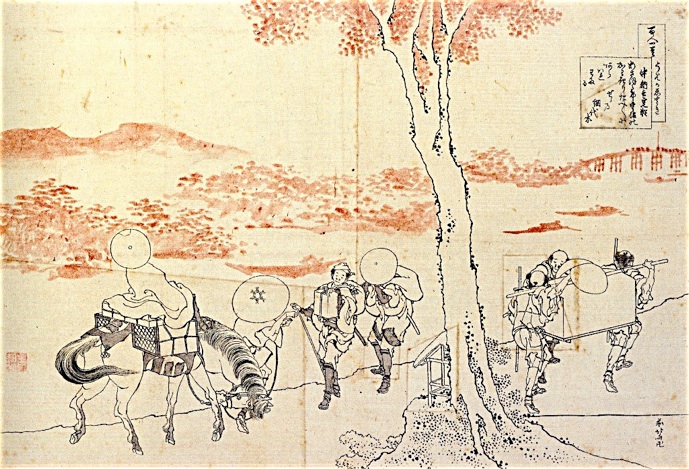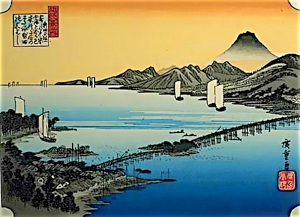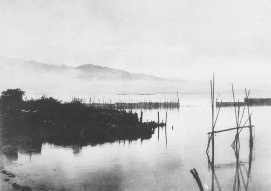権中納言定頼


朝ぼらけ
宇治の川霧
たえだえに
あらはれわたる
瀬々の網代木
ごんちゅうなごんさだより
あさぼらけ
うじのかわぎり
たえだえに
あらはれわたる
ぜぜのあじろぎ
Fujiwara no Sadayori
In winter dawn
The mists on Uji River
Come and go,
Now revealing then hiding
The fish traps at Zeze.
Hokusai
Fujiwara no Sadayori (995 - 1045), with the title Gonchunagon, was the son of Kinto (poem 55). He is one of the Thirty-Six Immortal Poets. It was he who challenged Koshibiku (poem 60). He has forty-five poems to his name.
It is quite possible to see this poem as a simple poetic description, but some discover a hidden meaning in it when they compare it with a poem by Hitomaro in the Manyoshu (3:264) (and Shinkokinshu) that refers to the same fishing stakes in the Uji river:
もののふの八十宇治川の網代木にいさよふ波のゆくへ知らずも
Like the waves that wander
Among the fishing stakes
In Uji river,
Of the eighty warrior clans
I do not know which to turn to.
From Pictures of the Heart - Yoshua Mostow:
“With this intertext, Sadayori’s poem is understood to refer to the circle of death and rebirth, to which the shifting mist is compared. The Yoritaka-bon, however, believes that the poem is a metaphor for hidden love. None of these readings is currently accepted.”
Zeze is a place at the southern end of Lake Biwa, near Otsu, where the lake flows into the Uji River. That part of the river is called Seta. The alliteration of ‘a’ in the poem suggests freshness and grandeur. On Hokusai’s drawing several people are watching the mists clear up in the distance.


Hokusai
Evening glow at Seta (Eight Views of Omi)


Mist over fishing traps at Zeze (1902)
